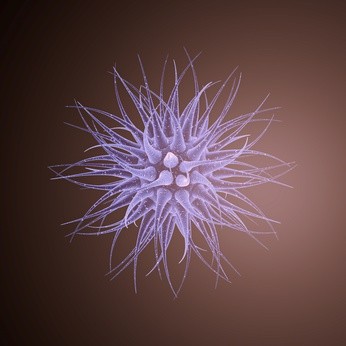Gonorrhea (Men, Women) Symptoms, Relapse, Treatment
Gonorrhea is a relatively common sexually transmitted infection in the United States, along with chlamydia and syphilis. It may not be life-threatening but can cause severe and debilitating symptoms. It can also be transmitted to newborns born to infected mothers during childbirth and lead to blindness in babies. Yet it can be prevented with safe practices which can also help in avoiding more serious infections that are transmitted through sexual contact such as HIV.
What is gonorrhea?
Gonorrhea is a bacterial infection caused by Neisseria gonorrhoeae that is usually transmitted by sexual contact. It is also known by common names such as the ‘clap’ or ‘drip’. The bacteria usually infects the site where it enters, like the genitals, rectum or mouth but can sometimes extend beyond to the surrounding organs or even to distant sites like the joints. It frequently occurs along with chlamydia, another common sexually transmitted infection.
Stats about Gonorrhea
- There are 700,000 new cases of gonorrhea every year in the United States but only about half of these cases are reported to medical authorities. Globally there are some 200 million new cases annually.
- Women are more frequently infected than men and are more likely to asymptomatic whereas males are very rarely without symptoms.
- Gonorrhea is more often seen in the 15 to 24 year age group and sometimes in children in which case it is an important marker for sexual abuse.
Causes of Gonorrhea
Neisseria gonorrhoeae, the bacterium that causes gonorrhea, is mainly spread by sexual contact. When the bacteria make contact with mucosa which is the layer of tissue that lines the cavities like the vagina, urethra, mouth and rectum it can then penetrate deeper into the tissue. The immune system responds to limit its penetration and spread further through the body. It can be carried by semen deeper up the female reproductive tract to reach the cervix.
How is it spread?
Gonorrhea is primarily spread by sexual contact. This includes oral, vaginal and anal intercourse with a partner who has gonorrhea. Even the use of fingers or objects contaminated with the bacteria can transmit the infection. During childbirth, the newborn may contract the bacteria during the passage through the birth canal. It is also possible for autoinnoculation to occur where a person with gonorrhea spreads the bacteria to other sites on the body through the hands after touching the infected area.
Risk Factors
Any person can contract gonorrhea after intimate contact with an infected person. Studies have shown that on first contact a woman is about 3 time more likely to acquire the infection from an infected man as compared to a man acquiring the infection from an infected women. Therefore sexually active females in the 15 to 24 year age group are considered to be high risk especially with one or more of the risk factors below.
People who are more likely to contract gonorrhea are those who:
- Do not use barrier protection during intercourse.
- Have multiple sexual partners.
- Have other sexually transmitted diseases (STDs).
- With a previous history of gonorrhea.
It is important to note that while having multiple sexual partners and not using barrier protection increases the risk, the fact is that anybody who is sexually active is at risk of gonorrhea.
Signs and Symptoms
It is possible to have gonorrhea and not have any symptoms. This is more likely to occur in women than in men infected with gonorrhea. However, the lack of symptoms does not mean that the infected cannot transmit it. Gonorrhea is contagious but limited primarily to transmission during sexual contact. Therefore a person without symptoms can still spread the infection to partners.
The incubation period for gonorrhea ranges between 2 to 10 days. This is the period of time during which no symptoms appear after infection. Men have a slightly longer incubation period of 2 to 14 days. It is possible that the incubation period can be as long as 30 days in some cases. The genital symptoms can vary slightly between men and women although the oral and anal symptoms when present are largely the same between the genders.
Symptoms in Women
- Burning upon urination
- Vaginal discharge (yellow/green)
- Vaginal bleeding (not menstruation)
- Lower abdominal and/or pelvic pain
- Swollen vulva
If the infection spreads to the upper parts of the female reproductive system, especially as far up as the fallopian tubes, then infertility may be a complication due to tubal scarring.
Symptoms in Men
- Urethral discharge (yellow/green)
- Pain upon urination (dysuria)
- Testicular pain with/without swelling.
Other Symptoms
The inflammation presenting with burning, itching, pain, redness and swelling can occur at other infected sites. This includes the rectum, eyes and throat. Enlarged lymph nodes may also be present in and around these areas. Gonorrhea can also involve the joints if the bacteria is able to reach it leading to septic arthritis. Fever, nausea and vomiting may also occur although rare.
Treatment of Gonorrhea
Gonorrhea can be completely cured with early and proper treatment. Complications may then not arise. However, delayed treatment or incomplete treatment may not be able to prevent complications. In very rare cases untreated gonorrhea could even lead to death. Antibiotics are used to treat gonorrhea and this includes:
- Ceftriaxone (injection), with
- Azithromycin (oral), or
- Doxycyline (oral)
If ceftriaxone is ineffective then cefixime may be used instead. Due to the rise in drug resistant gonorrhea, it is important that the entire course of antiotics is completed.
Gonorrhea Relapse
Once completely cured with antibiotics, a relapse is unlikely to occur provided that the gonorrhea is uncomplicated. However, the infection can recur if a person does not change their high risk sexual habits. This recurrence is due to a new infection through contact with an infected person. Humans do not develop immunity to gonorrhea after being infected and treated.
Another concern about a relapse may also involve poor patient compliance. By not finishing the course of antibiotics, not following up with a doctor for alternative antibiotics in the even of drug resistance, and not using the antibiotics as directed, the infection can return even after initially improving following the commencement of the medication. This relapse is a result of the infection not having resolved with prior treatment.
References:






